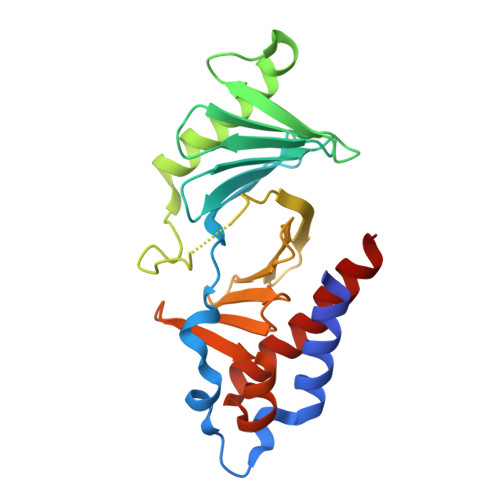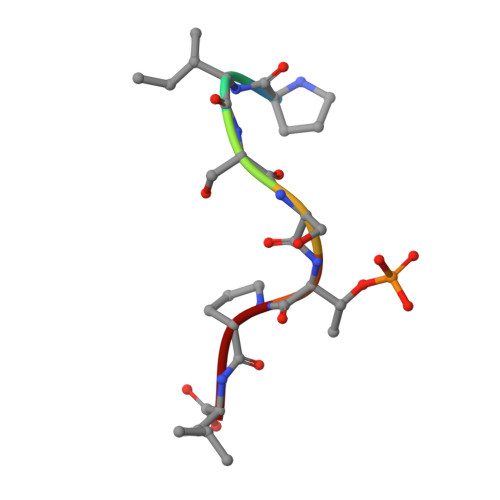Crystal Structures of Plk1 Polo-Box Domain Bound to the Human Papillomavirus Minor Capsid Protein L2-Derived Peptide.
Jung, S., Lee, H.S., Shin, H.C., Choi, J.S., Kim, S.J., Ku, B.(2023) J Microbiol 61: 755-764
- PubMed: 37684534
- DOI: https://doi.org/10.1007/s12275-023-00071-3
- Primary Citation of Related Structures:
8JOQ, 8JOY - PubMed Abstract:
Human papillomaviruses (HPVs) can increase the proliferation of infected cells during HPV-driven abnormalities, such as cervical cancer or benign warts. To date, more than 200 HPV genotypes have been identified, most of which are classified into three major genera: Alphapapillomavirus, Betapapillomavirus, and Gammapapillomavirus. HPV genomes commonly encode two structural (L1 and L2) and seven functional (E1, E2, E4-E7, and E8) proteins. L2, the minor structural protein of HPVs, not only serves as a viral capsid component but also interacts with various human proteins during viral infection. A recent report revealed that L2 of HPV16 recruits polo-like kinase 1 (Plk1), a master regulator of eukaryotic mitosis and cell cycle progression, for the delivery of viral DNA to mitotic chromatin during HPV16 infection. In this study, we verified the direct and potent interactions between the polo-box domain (PBD) of Plk1 and PBD-binding motif (S-S-pT-P)-containing phosphopeptides derived from L2 of HPV16/HPV18 (high-risk alphapapillomaviruses), HPV5b (low-risk betapapillomavirus), and HPV4 (low-risk gammapapillomavirus). Subsequent structural determination of the Plk1 PBD bound to the HPV18 or HPV4 L2-derived phosphopeptide demonstrated that they interact with each other in a canonical manner, in which electrostatic interactions and hydrogen bonds play key roles in sustaining the complex. Therefore, our structural and biochemical data imply that Plk1 is a broad binding target of L2 of various HPV genotypes belonging to the Alpha-, Beta-, and Gammapapillomavirus genera.
Organizational Affiliation:
Disease Target Structure Research Center, Korea Research Institute of Bioscience and Biotechnology, Daejeon, 34141, Republic of Korea.
















